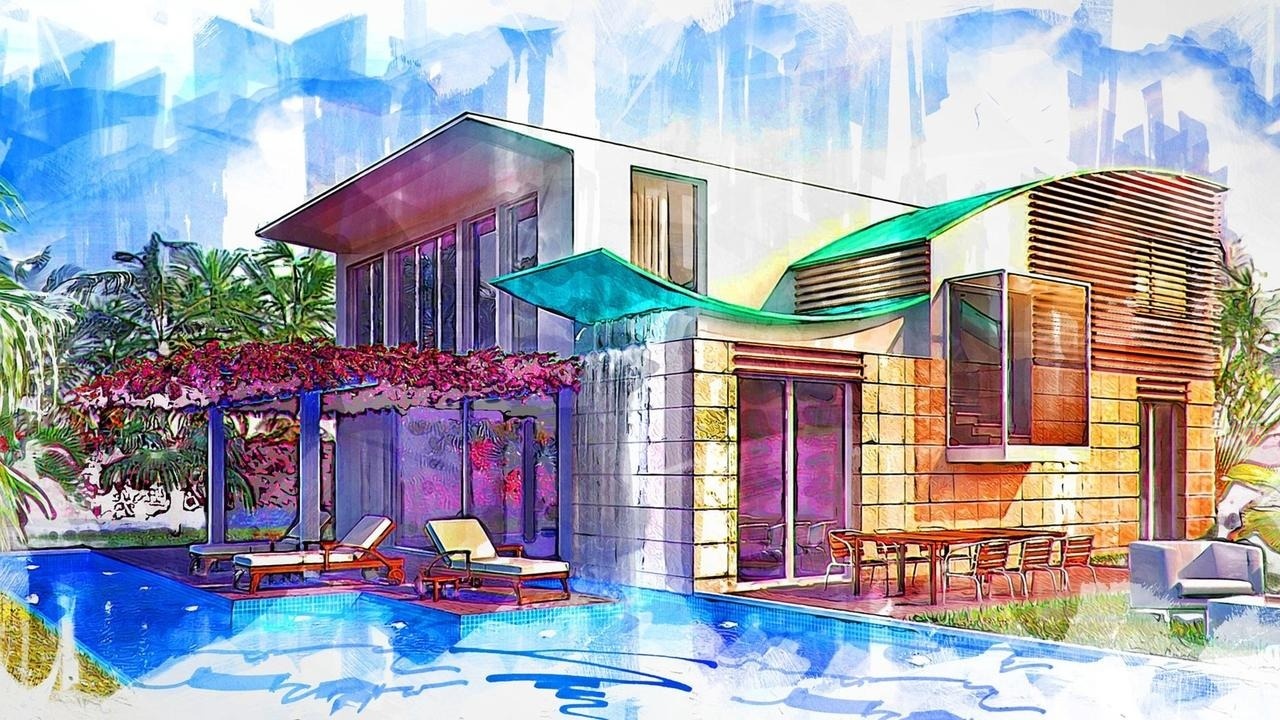DESIGN BLOG
On the Innovation of Design
Over 500+ article essays by Maria Lorena Lehman
Special Invitation
FORESIGHT DESIGN GUIDE
Top 5 Lessons from Star Trek about how to design for the future.

Schematic Design – Using an Occupant-Centered Design Approach
Introduction: The Definition
Schematic design is the first stage of an architectural design project, and within this phase there are important milestones to get right that will greatly leverage the project’s results throughout the rest of its impending design phases. For example, by iteratively designing through various schematic prototypes, it becomes possible to optimize one’s design concept idea in a way that prevents future errors and expands the discovery of new design opportunities. Thus, the schematic design phase is critical to get right to ensure that the rest of the project continues forward smoothly and with successful results. A key approach by which to accomplish the latter is to inject an occupant-centered design approach during the schematic design phase. This ensures that architectural details that will be later developed will all be orchestrated to meet the needs and goals of future building occupants along with client requirements and expectations.
To successfully ideate, conceptualize, and communicate a schematic design idea, the architectural design concept can be visualized through digital or hand created visualizations. (1) And it is in such architectural visualizations that one can gain great insight into the inner-workings of multi-sensory design occupant experience for a given idea – particularly as environments become evermore interactive and adaptive in their functionality. This article will uncover best strategies to help you improve your schematic design process to target groundbreaking design results. To do this, it is important to first begin by understanding and expanding beyond programming methods.
Programming and Schematic Design
In order to design from an occupant-centered perspective, an architect needs to not only think programmatically, but also converge this programmatic thinking with a multi-sensory design process. So, what does this mean? Essentially, this requires best engagement in empathetic design, where you as an architect see deeply into the various architectural layers that make up your project. These layers include aspects like materiality, nature, contextual surroundings, authenticity, aesthetics, and meaning. In other words, it is important to see your schematic design programmatically (such as with symbols and diagrams that help you envision the space(s)), but it is also vital to see even more deeply into your schematic design by getting deeper insight into how certain architectural layers work together to yield occupant experience. After all, a building’s form can be designed in a multitude of ways that are represented by a programmatic symbol, but by creating a multi-sensory design three-dimensional visualization, it becomes possible to orchestrate the form to innovate occupant experience.
Again, the key is to innovate occupant experience during the schematic design phase. It is during this stage that the most creative freedom exists, and it is within this stage that important design decisions are made that will subsequently impact the rest of the project. That is why an occupant-centered design approach that gets you to think beyond programmatic diagrams is key. In other words, it is important to find multi-sensory alignments and synergies within a schematic design concept – these allow one to understand the design idea from an occupant’s perspective, in terms of what they will process through their senses – including the five classical senses: visually, aurally, olfactorily, haptically, and even through taste. By using one’s multi-sensory design skills during the schematic design phase, it becomes possible to create architecture that “moves” people, to help them not simply to function within your building, but to thrive optimally.
Yet, how does a schematic design go from being merely a functional programmatic solution, to becoming an innovative multi-sensory design architectural experience? Read on.
Design Concept
When developing your schematic design idea into a concept design, there are various methods by which to help you unlock innovative multi-sensory design ideas. Two key featured methods follow:
Identify and Visualize Key Sensory Zones: Within your building design programmatic analysis, you are likely to discover critical spaces within the architectural design. Such critical spaces are key moments during the architectural narrative that more significantly impact the occupants experiencing your building. Such key space may include an entry or exit moment, a space where an occupant spends a lot of time, or even a space where an element of surprise awakens curiosity in an occupant in a way that brings greater meaning to their experience. Really, key spaces can be vital areas for different reasons, but what matters is how you as an architect go about understanding, designing, and communicating them during the schematic design phase. For instance, by visualizing key sensory zones through computer rendering stills it becomes possible to orchestrate architectural emitted stimuli (like materiality or light) in a way that targets the innovation of occupant experience.
The key here is to use visualization during the schematic design phase to not only communicate your design concept idea to a client, but also as a way to see your design more deeply – to innovate its architectural experience from a multi-sensory design perspective. In other words, do not simply visualize to re-present your design concept idea. Instead, visualize to deepen your design concept idea sensorially. This will help to greatly optimize your schematic design process.
Storyboard Your Occupant’s Architectural Journey: When designing from a multi-sensory design perspective, it will help to think about your architectural schematic design like a filmmaker. For instance, a film feeds the viewer’s senses and in doing so guides them on a fluid journey that taps into their emotion. Furthermore, filmmakers use storyboards during early design stages to help them see key moments during the narrative journey of the film, along with how these moments flow from one to the next to create an innovative and immersive film experience. In this way, an architectural storyboard (or animation) can greatly help you to make critical schematic design decisions that will beneficially ripple through the rest of the building project.
When creating a schematic design storyboard for your architectural project’s narrative, it is important to incorporate your key sensory zones (see above). This will ensure they are aligned and orchestrated within a fluid narrative that makes up your architectural design. When created properly, such architecture will touch occupants at five critical experiential levels: the physiological, intellectual, emotional, behavioral, and even the spiritual. (2) Once again, the key is to not merely re-present your programmatic analysis in visual form, but to develop your programmatic analysis further – using a multi-sensory design approach.
Schematic Design Proposal
When it becomes time to present your design concept idea to your client as a schematic design proposal, your design solutions will resonate at deeper levels if they have been developed from a multi-sensory design perspective. Furthermore, you will have an easier time presenting your most innovative discoveries and design breakthroughs that are incorporated into the project. Why? Because you will be able to prove the return-on-investment (ROI) to your client. You see, by using a multi-sensory design approach during your schematic design phase, you are able to create a building that does not simply “house” function, but you will create a building that fosters function. This means that if designing an office building, your multi-sensory design will increase creativity and productivity. Or if designing a school, your multi-sensory design will increase curiosity and learning. This works for all building types, but the success of multi-sensory design ultimately relies in your own mindset and skillset.
Conclusion: Why Occupant-Centered Matters
When working to expand your design process creativity, it is during your schematic design phase that most impact on a project’s success will be felt. And a most ideal way to do this is to use a multi-sensory design innovation approach. This occupant-centered design process will help you to stand out as an architect that strives for highest level poetic architecture that works at all three levels: functionally, aesthetically, and meaningfully. Be sure to leverage and optimize your schematic design process to do more than organize space sequentially. Instead, use it to innovate occupant experience poetically. For even more information, be sure to visit: Design Process Mastery: The Architect’s Guide
References:
(1) Thompson, K. (2019) 4 Way Renderings Are Beneficial. SOA-inc.com
(2) Lehman, M.L. (2017) Adaptive Sensory Environments. London/New York: Routledge.
ImageCredit: © ArtTower | Pixabay
Special Invitation
FORESIGHT DESIGN GUIDE
Top 5 Lessons from Star Trek about how to design for the future.

© 2024 Maria Lorena Lehman | MLL Atelier LLC
All Rights Reserved.
